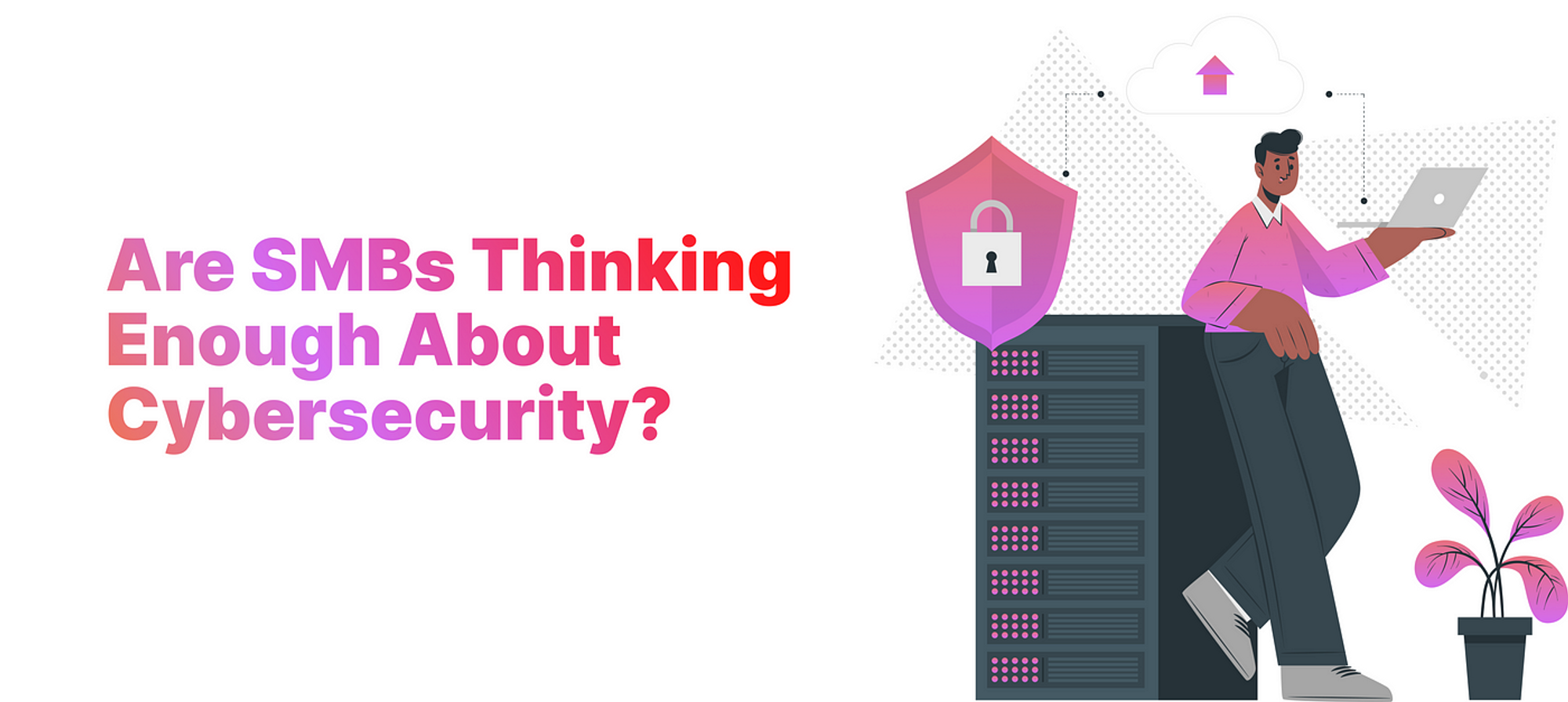
Summary: The impact of cyber-attacks on SMBs is damaging to their business and survival. This article provides a preliminary understanding of the importance of cybersecurity and how SMBs can optimally focus their cybersecurity energies.

Majority of SMBs (55%) report suffering cyberattacks with business cost varying from $37,500 (very small business), $47,622 (small business) to $68,733 (medium business). The impact of these attacks on SMBs can be crippling and SMBs list cybersecurity as one of their technology priorities. But when it comes to execution, SMBs need to examine if they are seeing adequate ROI from their cybersecurity efforts.
This article aims at providing SMBs with a preliminary understanding of the importance of cybersecurity and how they can focus their cybersecurity energies in the right areas.
The current state of SMB Cybersecurity
86% of SMBs have cited cybersecurity as one of their top five priorities with 38% citing cybersecurity as their #1 priority. 31% of medium businesses and 22% of small businesses indicated that their cybersecurity expenditure will be higher than originally planned.
While SMBs attach importance to cybersecurity, the current state of SMB cybersecurity is largely inadequate.

Barriers for SMBs to have effective cybersecurity capabilities

- Varied internal security needs
- Solutions are too complex
- Suppliers are unable to provide optimal solutions
- Solution prices
- Lack of guidance
- Awareness of vendors/products
Cybersecurity practices That SMBs Can Implement
While reasons for poor cybersecurity capabilities may be many, it is important that SMBs, at a minimum, implement basic practices that protect their business, customers and data assets. A list of recommended practices adopted from the Federal Communications Commission (FCC) that can greatly help SMBs in safeguarding their business are as follows:

How can SMBs Build a Credible Cybersecurity Posture?
For a more strategy and method-oriented approach to building a credible cybersecurity posture, the framework recommended by the US Department of Homeland Security may be followed.

Briefly, this framework focuses on the following phases:
- Perform evaluation: Determine the current state of the organization
- Analyze identified gaps: Establish a future state where the organization wants to be
- Prioritize and plan: Identify gaps and prioritize actions
- Implement plans: Allocate required resources and execute plans
Marketplace as SMBs’ partner in the cybersecurity journey
Without the need to employ high-end professional services, Marketplace platforms can provide the right tools to apply a framework like the above. Marketplaces can offer the following tools:
- Assessment tools: Run automated scans or engage right fit service providers to perform current state evaluation
- Matching tools: Use advanced AI-assisted tools to match business requirements with current state evaluation and identify the right products and services for the organization
- Tracking tools: Use planning and tracking tools to prepare the path to implement on a cybersecurity plan
- Deployment tools: Easy integration and deployment of products and solutions
Conclusion
Following a holistic approach to cybersecurity will yield significant benefits to SMBs and protect their businesses. While adopting basic practices can provide SMBs minimum security, leveraging marketplace platforms can go a long way in developing a credible and persistent cybersecurity posture and make the execution of cybersecurity more efficient and simpler.




